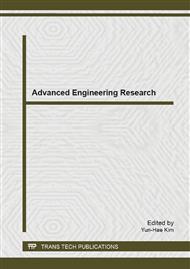p.1433
p.1438
p.1443
p.1448
p.1452
p.1456
p.1460
p.1464
p.1471
A New Functional Approach for Searching Optimal Reservoir Rule Curves
Abstract:
Rule curves are guidelines for long term reservoir operation. An efficient optimization technique is required to find the optimal rule curves that can mitigate water shortage in long-term operation. A new functional approach was proposed to search the optimal rule curves of reservoir. The results indicated that the situations of water shortage and excess release water of using the new approach are smaller than the situations of using the existing rule curves.
Info:
Periodical:
Pages:
1452-1455
Citation:
Online since:
April 2014
Authors:
Keywords:
Price:
Сopyright:
© 2014 Trans Tech Publications Ltd. All Rights Reserved
Share:
Citation:


